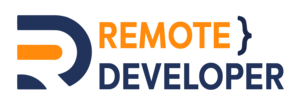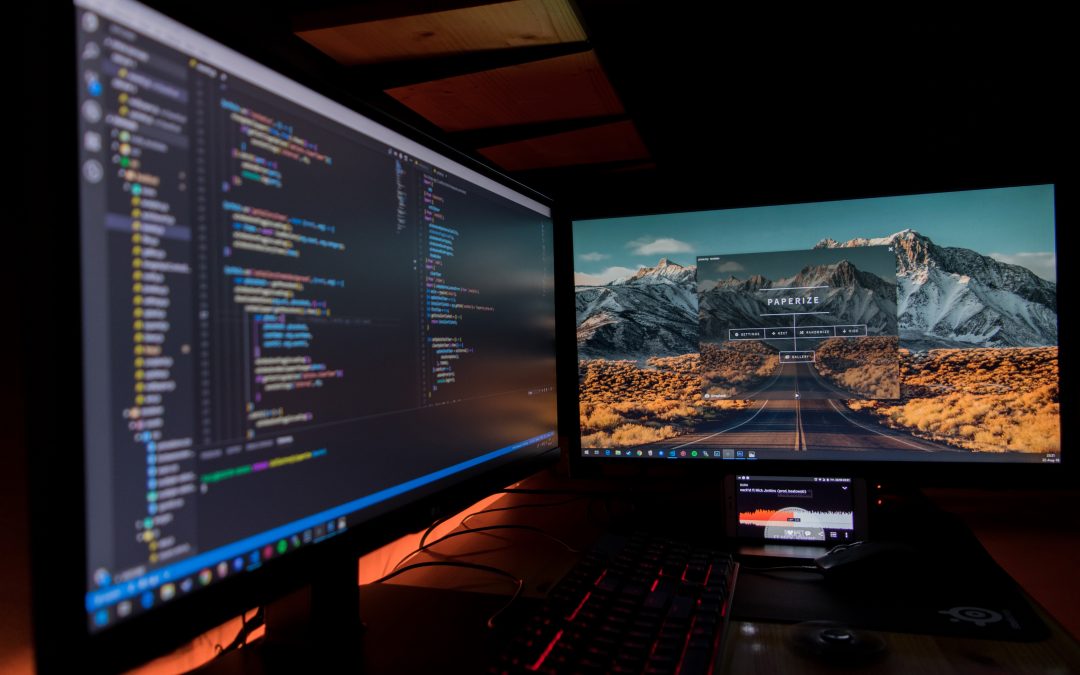Full Stack Developer is one of the desirable professions that many recruiters are looking for worldwide. The position itself is tagged with a hefty salary and attractive growth potential in the IT industry. It stands out for its multifaceted nature, with most web development and software engineering aspects.
However, being a full-stack developer is not easy as it sounds. There are tons of capabilities you need to learn before being considered for this position. So, if you want to be a full-stack developer, here is an article about full-stack developers, skills, and others that you might want to look at.
What is a Full-Stack Developer?
Before discussing what skills you need to become a full-stack developer, it is essential to first learn the definition of this career. To become a full-stack engineer, you first need to familiarize yourself with these two web development concepts: front end and back end.
The front end of an application covers the client-facing side of a system. It is the elements that users directly interact with. This side of development focuses on the visual aspects of a website or an application. Front-end developers design and optimize this visible side of a program or website. They make all components and features responsive and user-friendly in different environments such as mobile phones, tablets, and desktops. Front-end developer uses programming languages like HTML, CSS, and JavaScript to create an engaging look.
On the other hand, the back end encompasses all the behind-the-scenes features of an application. It focuses mainly on the server, database, APIs, and more. The back end helps the product owners create a pathway to deliver information to and from the users using the front-end part of the website.
To sum it up, a full-stack development refers to the entirety of a computer system program. This means it covers both the front and back end of the application. A full-stack developer works on both the front and back end of the website or application. They tackle the whole development, including designing the interface, setting up the database, and sometimes even planning the product. Full-stack developer requires both skills of back-end and front-end development.
Full-Stack Developer vs. Software Engineer
Although in the same field, full-stack developers and software engineers should not be mixed up. The critical difference between the two is that a full-stack developer can work on multiple technologies simultaneously. They are experts in all the steps of program development – both client-facing and server-side development and maintenance during the life cycle.
On the other hand, software engineers work in building technologies that work on computers. They code and test these applications to ensure they run on computers well and without hindrances. Unlike full-stack developers, the primary focus of a software engineer is building an application and making sure that it can carry out its functions efficiently. They have complete knowledge of the system architecture of the software.
What are the Crucial Skills to Become a Full Stack Developer?
Suppose you are looking to make an IT skills investment or looking for a new career path. In that case, it is essential to first learn the nitty-gritty details before diving into this path. Whether it’s data science, programming, or data engineering, skills are crucial. These are what you will be spending for most of your career.
As its names suggest, Full Stack Developer requires the programmer to work on a product’s full development cycle. As such, here are a few full stack developer skills and abilities that need to be acquired:

1. HTML/CSS
Hypertext Markup Language (HTML) & Cascading Style Sheets (CSS) are necessary for front-end development. HTML is used for adding web content, while CSS is used to personalize the design and style of the website. A full-stack developer also needs to use HTML to define the web page structure using markup. In addition, the developer needs to be proficient in CSS to effectively present the HTML elements.
Both are important to determine the look and feel of the program or the website. It plays a significant part in designing a smooth and user-friendly interface and attracting potential customers.
2. JavaScript
JavaScript is mandatory when developing both websites and software. This scripting language is widely used in coding both front-end and back-end applications. JavaScript is the only language that can run natively in web browsers and on the server-side.
Full-stack developers need to have in-depth knowledge of JavaScript, including the concepts and frameworks like Angular and React and how to use DOM and JSON.
One of the best things about JavaScript is its valuable features, including functions, higher-order event delegations, prototypes, and closure, which help create responsive web pages. The scripting language is also used to add behaviors using HTML.
3. Git and GitHub
Every developer has probably heard of Git and Github. Git is an open-source version control system that lets developers handle and track their source code history. It also helps speed and efficiency for both small and large-scale products. With Git, changes made on applications, codes, websites, and others are more manageable during the development process. Similarly, GitHub is a cloud-based service and profile that lets you manage your Git repositories. It is excellent for developers working in a team.
Git allows full-stack developers to track minor alterations done to the application codebase. Git can empower them in exploring unique opportunities for productivity and security without risking errors on the product. It also lets them collaborate better with other teams working on the same project.
4.
While front-end languages such as HTML, CSS, and JavaScript are necessary for full-stack development, the back-end is pivotal for any software or application. The back-end development is the backbone that has the business logic – including database, servers, and more.
A full-stack developer should know at least one (1) back-end language to perform his task. There are plenty of back-end languages to choose from, such as – PHP, Python, Java, or Ruby.
5. Web architecture
Full-stack developers are like the jack of all trades in software development. They are equipped with multiple skills necessary for developing both the front and back end of an application. Web architecture is one of the crucial full stack developer skills must-have.
Full Stack Developers should be aware of the nitty-gritty of web architecture. Since they are responsible for developing the software from scratch, web architecture can help them figure out the necessary data to perform the task.
6. HTTP and REST
HTTP and REST have their own unique purposes in software development. Although they go hand in hand, HTTP is a protocol used in communication between client and server to transit web resources such as HTML files. On the other hand, REST is a software architectural style that uses HTTP to gather data and acts as a translator between the back-end and front-end.
A full-stack developer needs to understand how HTTP and Rest interact to catch and deliver data that can be useful on both the server and client.
7. Database storage
All applications need a database to store data. The database is critical for the back-end or server-side development of apps. You get to keep all data that comes from HTTP requests.
As a full-stack engineer, a database storing and maintenance is one of the full-stack developer skills you need. You need to know at least one database and how to interact with it. The most popular database management system (DBMS) available today are MongoDB, Oracle, Redis, MySQL, etc.
8. Basic design skills
You will encounter many designing functions when developing a website or application as a full-stack developer. Developers need to have a basic knowledge of UI/UX and prototype designs.
It can help you along the way to explain the planned interface to the designer and enhance the user experience when developing the product. Tools such as adobe illustrator and adobe photoshop are among the top choices by designers.
9. NPM
Package managers can help full-stack developers in packaging and deploying their projects. NPM is one of the widespread package managers available out there. It aids developers in the installation of different packages and offers solutions for numerous issues.
10. Soft skills
Being a full-stack developer does not solely require technical skills. It also needs to be balanced with soft skills that can influence your work and interaction with others. As such, the following soft skills are great to have as a developer:
- Global thinking
- Good communication and collaboration skills
- Creativity and attention to detail
- Curiosity to learn
- Time management skills
Conclusion
Full-stack developers are skilled experts who can handle most development tasks and needs. If you aspire to be one, you must work hard in mastering full-stack developer skills and capabilities. You need to be updated on technologies and market demand.
It does not just end there. You need to learn soft skills to interact effectively with others. Despite being a full-stack developer, you need to remember that software development is a team sport. You need to learn how to boost morale at work, especially when collaborating with coworkers.

